Clair offers Electrostatic Precipitators (ESP’s), which is one of the industrial air pollution control equipment’s. ESP’s can handle large gas volumes with a wide range of inlet temperatures, pressures and dust loads. For many applications the collection efficiency of particulate matter can be >99%. The ESP’s can handle hot process exhaust gases where temperatures are in the range of 50 – 400 degree C. ESP’s offered by Clair can effectively collect particulate matter for coal and biomass fired boilers, furnace, incinerators, kiln, sinter, pellet, iron, non-ferrous applications and several other industries. Clair has provided ESP’s for handling gas volume of up to 13,00,000 m3/h.
Every particle either has or can be given a charge—positive or negative. The particles in the gas stream are charged (imparting negative charge). The negatively charged particulate matter then migrates to the grounded collecting plates and be captured. The particulate matter will accumulate on the collecting plates forming a dust layer. This dust layer is then removed by rapping. Charging, collecting, and removing—that’s the basic idea of an ESP, which helps in capture of particulate matter.
What makes our ESP Design Unique?
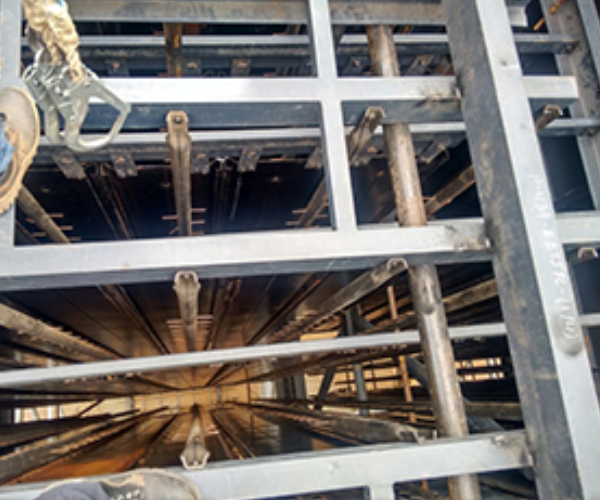
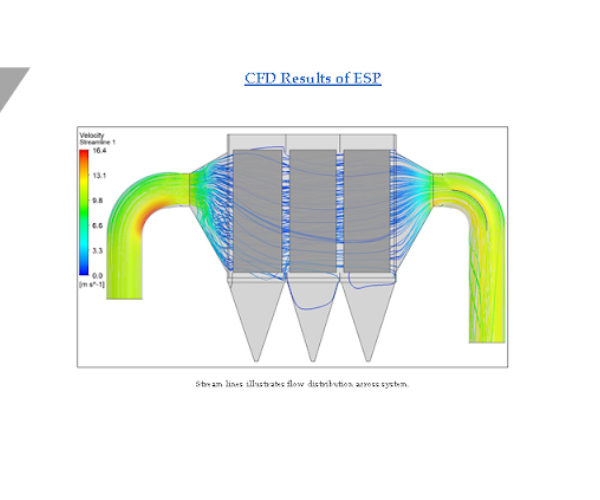
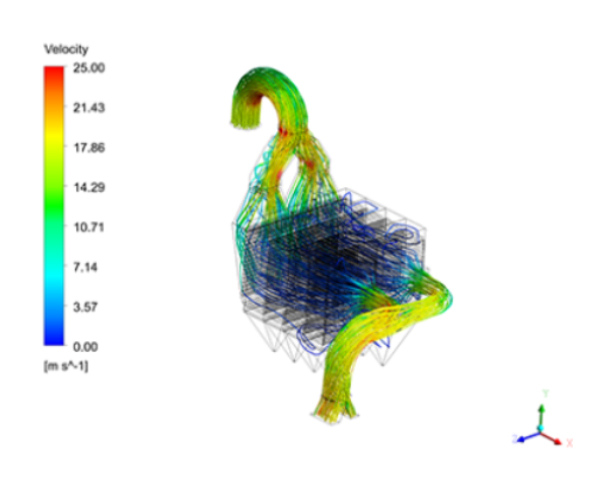
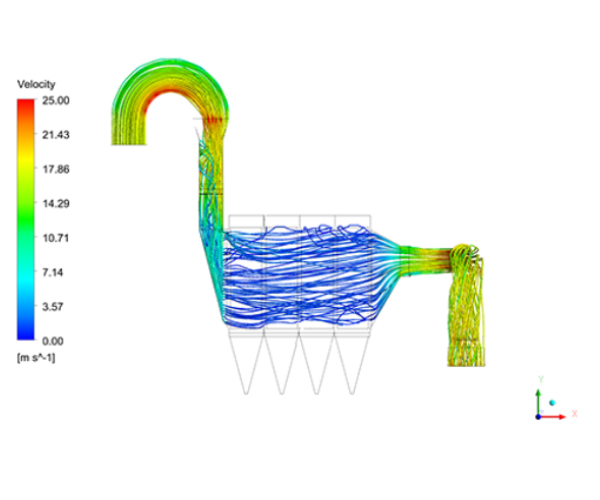
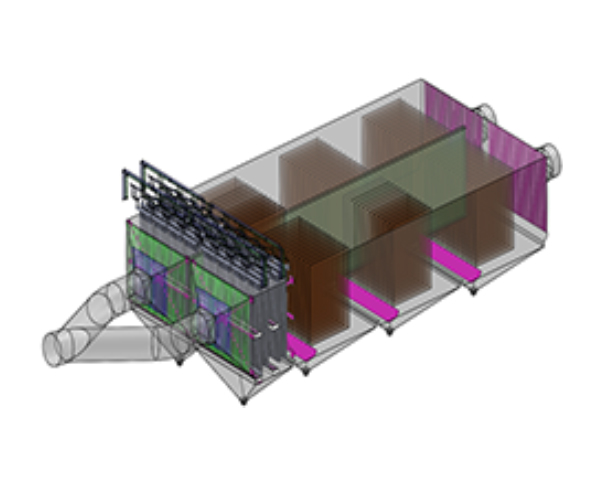
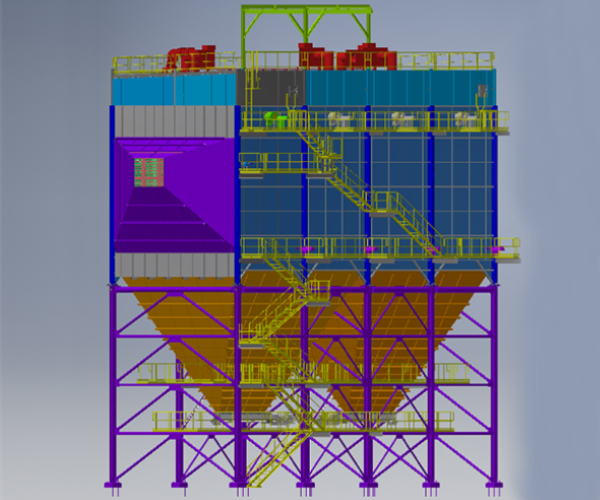
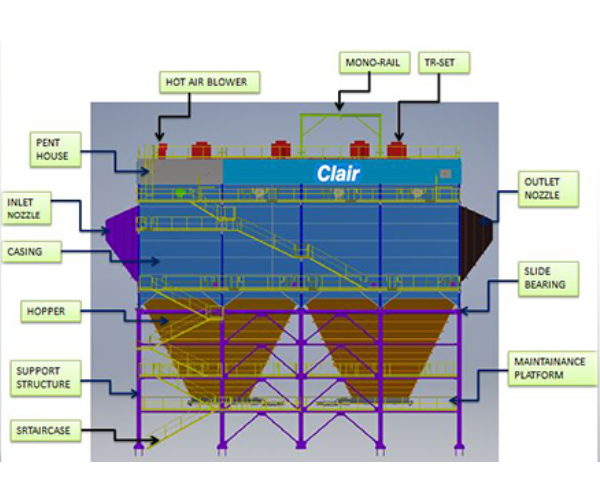
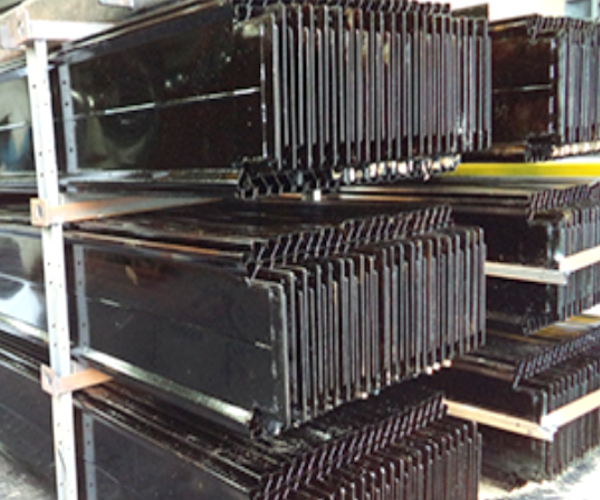
Applications of ESP in Steel processes:
The major application of ESPs in cement is at the Clinker Cooler which is an essential part of a cement process. Functionally, it cools down the red hot clinker discharged from the kiln. Various designs of clinker cooler are used in the industry, of which, the grate coolers are the most common. In a grate type clinker cooler the clinker at temperature as high as 1350°C falls on a series of stationary and reciprocating grates. Pressurized cool air is made to flow beneath the grates, which takes up most of the heat of the clinker as it rises and finally circulated to the pre heaters. The temperature of clinker falls down to 150 DegC approx. but the temperature of gases is 350 DegC. In order to handle these flue gases, ESP is the only solution.
We have successfully installed 25 cooler ESP’s out of which 15 are in India, with the guaranteed emission level ranging from 100 mg/Nm3 < 25 mg/Nm3. Due to the stringent norms of emission level, we have the capability to provide clinker cooler ESP’s guaranteeing an emission level of < 10 mg/Nm3.
Extensive use of Pulsejet Bag Filters in below applications where desired emission is less than 30 mg/Nm3:
and more…
ESP in Copper Smelting:
A typical pyrometallurgical copper smelting process, includes 4 steps: roasting, smelting, concentrating, and fire refining. Smelting of roasted (Calcine feed) or unroasted (Green feed) ore concentrate produces matte, a molten mixture of copper sulfide (Cu2S), iron sulfide (FeS), and some heavy metals. Converting the matte yields a high-grade “blister” copper, with 98.5 to 99.5 % copper. Typically, blister copper is then fire-refined in an anode furnace, cast into “anodes”, and sent to an electrolytic refinery for further impurity elimination.
Gas effluents from roasters are sent to an ESP or spray chamber or are combined with smelter furnace gas effluent before particulate collection. Overall, the hot ESPs remove only 20 to 80 percent of the total particulate (condensed and vapor) present in the gas. Cold ESPs may remove more than 95 percent of the total particulate. Particulate collection systems for smelting furnaces are similar to those for roasters. Reverberatory furnace off-gases are usually routed through waste heat boilers and low-velocity balloon flues to recover large particles and heat, then are routed through an ESP or spray chamber/ESP system. We have the technology for this application to handle the particulate matter
ESP in Alumina Smelting:
Emissions from Aluminum reduction processes are primarily gaseous Hydrogen Fluoride and particulate Fluorides, Alumina, Carbon Monoxide, Carbon Dioxide, Volatile organics, and Sulfur Dioxide from the reduction cells.
A variety of control devices are used to remove emissions from Reduction cells and Anode Baking furnaces. To control gaseous and particulate fluorides and particulate emissions, one or more types of Wet Scrubbers (Spray tower and Chambers, Quench towers, Floating beds, Packed beds, Venturi) are applied to all three types of reduction cells and to Anode Baking furnaces. In addition, particulate control methods such as wet and dry ESP, multiple cyclones and dry Alumina Scrubbers (Fluid Bed, Injected and Coated Filter types) are used on all three cell types and with anode baking furnaces.
Out of three methods of disposal of effluents in Sugar Industry, the most common one is Incineration, after the Zero Effluent Discharge norms levied by the Indian government due to soil infertility owing to land composting of spent wash fluid.
Spent Wash is burnt in the boiler with fuels such as coal / bagasse and the resultant flue gases are sent to ESP. Clair is market leader in pollution control equipment for Sugar industry, successfully achieving an emissions <50 mg/Nm3 for more than 75 installations across the country.
In Paper industry, air pollution occurs primarily during the pulping process. Most pulping mills incorporate large boilers, either power boilers to generate energy for the pulping process and steam for the paper-making dryers, or recovery boilers to recycle chemicals in pulping. Air pollution also occurs when paper is chemically treated to produce smoother surfaces, but this is less serious than the air pollution created by pulping.
ESPs handling boiler exhaust gases majorly control the emissions of paper industry. With experience in handling many kinds of fuels, we at Clair are well set to tackle crucial pollution challenges in the paper and pulp industry.
What makes our ESP Unique?

Emitting Electrode is rigid ERW pipe with uniquely designed sharp edged studs welded to generate uniform corona distribution with increased electric field strength
Emitting Electrode is rigid ERW pipe with uniquely designed sharp edged studs welded to generate uniform corona distribution with increased electric field strength
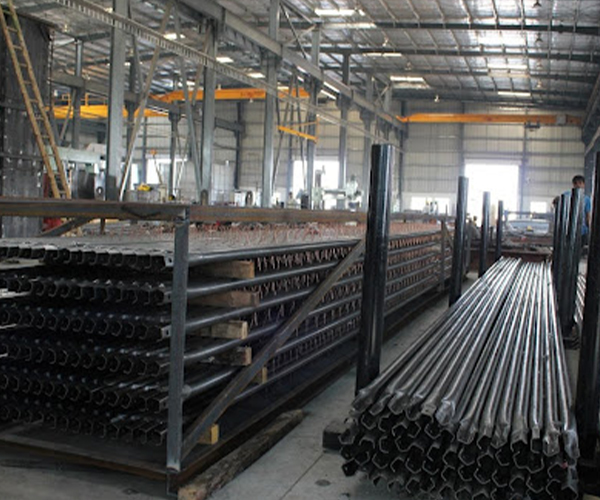

CFD Analysis – done for our Client in India by using ANCIS software.
Top view of our ESP installation during its erection stage at one of our client from the cement industry
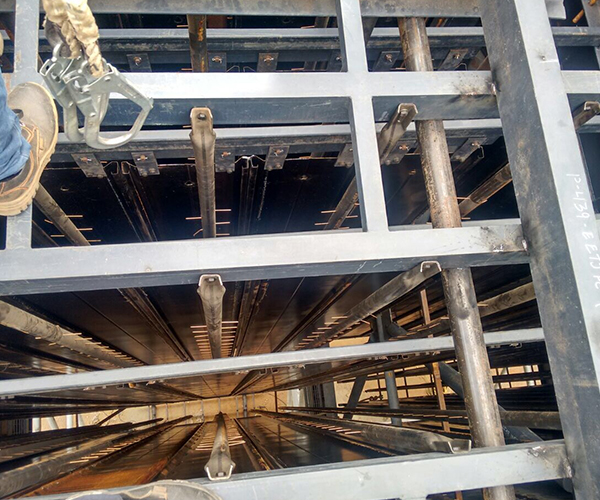
At one of the Cement plant requirements in Rajasthan for a leading cement manufacturer, an existing ESP was de-dusting the clicker cooler gases, however due to the revision in the emission norms to less than 30 mg/Nm3 from less than 100 mg/Nm3, there was a need to reconfigure the de-dusting arrangement. We completed the project along with design, engineering and supply of a customized ESP, placing it in parallel to the existing ESP to meet the emission norms.
| S.No | Description | Unit | Value |
| 1 | Gas volume (condition) | m3/hr | 2,92,200 to 3,42,720 Am3/hr at 130-180 Deg.C with WHRS ON 4,87,200 Am3/hr at 240-280 Deg.C with WHRS OFF, volume for new ESP to be decided by bidder based on existing ESP capacity for <30 mg/Nm3. |
| 2 | Gas temperature | Deg C | As mentioned above |
| 3 | Inlet pressure | mm WC | -25 to -200 |
| 4 | Dew point temperature | Deg C | 38 |
| 5 | Dust load at inlet | gm/ Nm3 | 35 |
| 6 | Guaranteed outlet emission | mg/Nm3 | 25 |
Based on the Air load test results for above parameters during our site visit, the following ESP design criteria were decided:
| S. No | Description | Unit | Value |
| 1 | Gas volume | m3/hr | 1,70,520 |
| 2 | Gas temperature | Deg C | 280 |
| 3 | Dust load at inlet | gm/ Nm3 | 35 |
| 4 | Guaranteed outlet emission | mg/Nm3 | 25 |
| 5 | No. of gas passages | 13 | |
| 6 | Height of the field | m | 10 |
| 7 | Length of the field | m | 4 |
| 8 | Model of ESP | CE – 01 – 1B – 4F – 13 GP – 8CP – 10.0 |

Our installation for a raw mill ESP in December 2015
Other projects
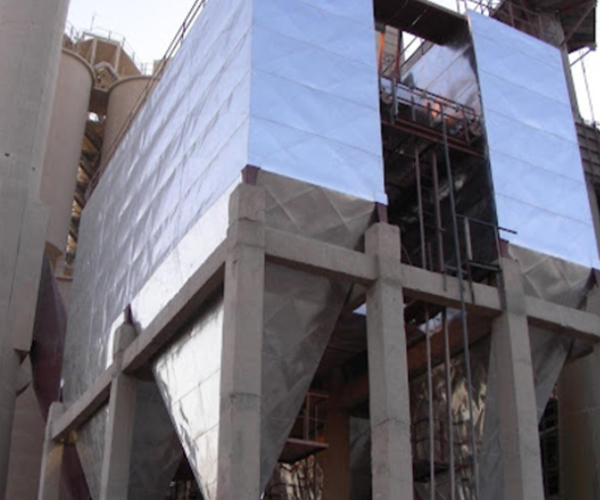
Our ESP installation for a plant located in Atbara, Sudan
Our ESP installation for a plant located in Orissa, India
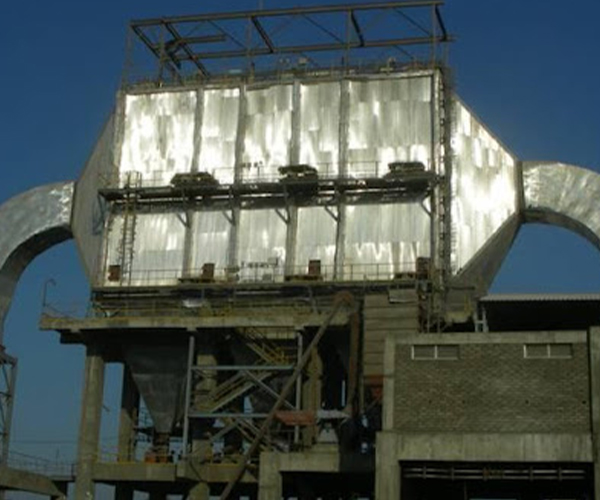
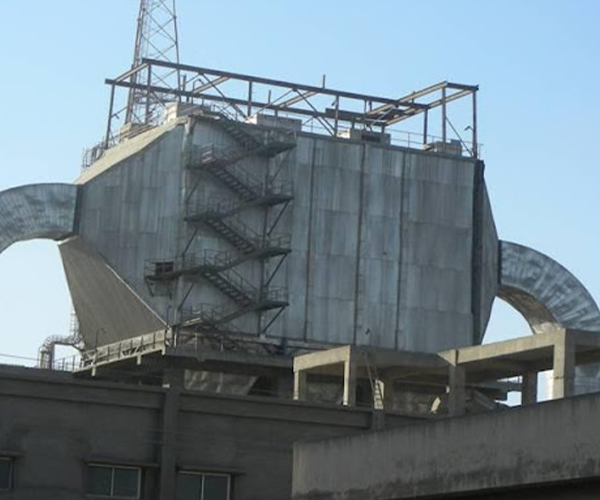
Our ESP installation for a plant located in the Vishakhapatnam, India